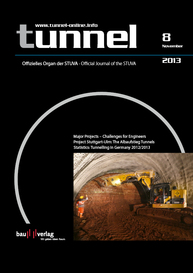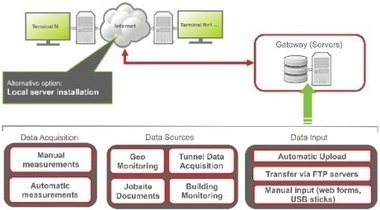Major Projects in Underground Construction – current Challenges for Engineers
Stuttgart is the venue for this year’s STUVA Conference. Outside a circle of experts this event will pass practically unnoticed. Stuttgart and tunnelling are linked by the public at large with the discussions relating to the Stuttgart 21 project. Other projects too are the subject of public interest. What can tunnelling engineers do to ensure that a majority comes out in favour of such projects?
The typical characteristics of a major project are its long duration, the high need for investments and great public interest. The size of major projects in technical and economic terms alone often results in public concern, which the client must treat seriously. Bridges must be built to attain majority-supported solutions thanks to dialogue among the interested parties and those directly affected. In this respect, the discussions must not be confined to requirements relating to costs, deadlines and quality. Safety needs (with regard to industrial and operational safety), environmental requirements, the need to master planning and execution processes, market requirements as well as coming to terms with public opinion all belong to a holistic approach. Nowadays, major projects can only be successfully accomplished providing that relations with the interested parties (Stakeholder Management) are cultivated systematically and thoroughly.
Major projects are associated with risks. “No construction project is risk free. Risk can be managed, transferred or accepted. It cannot be ignored”, was one of the main arguments by Sir Michael Latham in his report “Constructing the Team” on the British construction industry (1994). However, this message has so far failed to reach every corner of the land. In Germany, budgetary regulations frequently do not permit farsighted financing of risk costs. It is wrong to conclude from these legal marginal conditions that risks cannot accordingly be analysed in time and in a professional manner. During the early stages of a project in particular high grade risk management is of paramount importance, for at that point in time, room for manoeuvre is at its greatest.
Risk management is an executive responsibility. Executives shape the way of thinking whether an organization comes to terms with chances and dangers in an open manner or whether such topics remain hidden away. It is thus a most welcome fact that the state’s highest construction authority, the Federal Ministry for Transport, Building and Urban Development, has also decided to deal with these issues and establish corresponding guidelines.
Apart from early assessment and mastering of project risks, the cooperative nature of the work among those involved in the project is a further decisive factor for success. Whether those involved align their cooperation to confrontation or partnership is of essence for the success of the project. “Partnership in Construction” is the catch phrase in Germany relating to the model that is sought, which grants every partner the fair chance of preserving his interests while at the same time safeguarding the project’s success. Partnership understood this way thus signifies commitment to common goals, a jointly agreed on check on progress as well as the mutually coordinated resorting to measures should deviations arise. To ensure that a partnership can succeed, the contracts have to be drawn up accordingly with a balanced distribution of the risks. In this connection, unit price contracts with clear mechanisms for remunerating changes of quantities and costs related to construction times have proved their worth. This was also determined by the ITA in its Report No. 13 (2013) on special contractual aspects of conventional tunnelling.
A cooperative approach does not necessarily preclude conflict situations. The partnership has to prove itself particularly during such situations. Frequently the contractual partners agree on an out-of-court model for settling disputes, which quickly enables conflicts to be resolved without much fuss. The experience gained from many major projects reveals that the application of such an institution is advantageous for the partners in a project.
“Major Projects in Underground Construction – current Challenges for Engineers” is the title of this contribution. What role has construction technology to play there? None so far. It is a fact that the public expects the construction industry to be on the ball and capable of achieving major technical accomplishments. As a result the great progress achieved by the tunnelling industry has been accorded too little recognition. Technically and economically successfully accomplished projects provide the greatest contribution for increasing the acceptance of major projects. By achieving a long-term sustainable effect of this kind our activities would receive the greatest possible recognition.
We engineers in underground construction are thus called on to face up to even more extensive demands and to master them. This year`s STUVA Conference will certainly provide a great deal of stimulation for overcoming these challenges.
Yours,
Heinz Ehrbar




